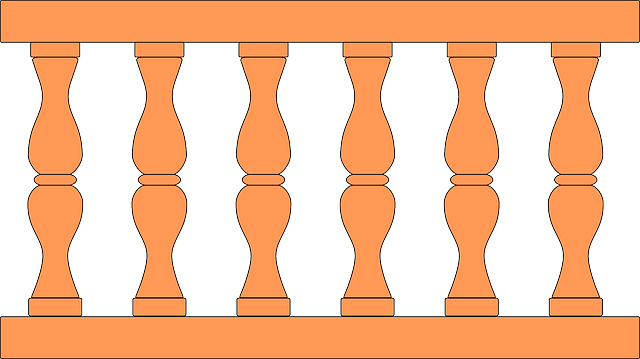Large properties present unique challenges when it comes to fencing, demanding robust, durable solutions that align with cost-effectiveness. This article explores innovative approaches to meet these needs, delving into the advantages of modern, cost-efficient fencing systems over traditional methods. We examine sustainable materials, creative design possibilities for expansive spaces, efficient installation techniques, and strategic maintenance plans. By adopting these strategies, property owners can enhance their outdoor spaces while managing costs effectively.
- Understanding Large Property Fencing Needs
- Traditional Fencing vs Cost-Effective Solutions
- Sustainable and Long-Lasting Materials
- Creative Design Options for Large Spaces
- Installation Tips for Maximum Efficiency
- Maintenance and Longevity: A Strategic Approach
Understanding Large Property Fencing Needs
Fencing a large property presents unique challenges compared to smaller plots. The primary consideration is durability and security, as fences must withstand potential damage from wildlife, extreme weather conditions, and high-traffic areas. Additionally, aesthetics play a significant role; homeowners want a fence that complements their property’s natural beauty or designed landscape.
Large properties often require fences that can span extensive distances, necessitating cost-effective materials and installation methods. The chosen fencing solution should also be low maintenance to save on long-term costs. Balancing these factors requires careful planning and an understanding of the specific needs and preferences of the property owner.
Traditional Fencing vs Cost-Effective Solutions
Traditional fencing methods, while effective, can be an expensive undertaking for large properties. The materials and labor required to install sturdy, long-lasting fences can significantly impact a property owner’s budget. However, there are cost-effective solutions that offer both durability and affordability. These innovative alternatives use advanced materials and designs, ensuring that property owners can secure their land without breaking the bank.
One such solution is the use of chain link fencing, which is not only economical but also versatile and durable. This traditional material has evolved to include various coatings and galvanization, extending its lifespan and making it suitable for diverse environments. Additionally, vinyl or PVC fencing offers a low-maintenance option that retains its aesthetics over time, providing an attractive and cost-efficient boundary solution for large properties.
Sustainable and Long-Lasting Materials
When considering fencing solutions for large properties, opting for sustainable and long-lasting materials is both environmentally responsible and cost-effective in the long run. Modern fencing options are now available that combine durability with eco-friendliness, a significant step forward from traditional materials. These innovative products often utilize recycled plastics or metal, ensuring they withstand harsh weather conditions while reducing environmental impact.
For instance, recycled plastic composite panels can mimic the look of wood without the need for regular painting or sealing. Similarly, certain types of metal fencing, such as galvanized steel or aluminum, offer exceptional resistance to rust and corrosion, ensuring your fence remains robust and attractive for decades. These materials’ longevity translates into fewer replacement costs, making them a smart investment for property owners.
Creative Design Options for Large Spaces
Large properties offer an opportunity to get creative with fencing designs, transforming a functional feature into an eye-catching landscape element. One popular option is to incorporate natural materials like wood or bamboo for a rustic appeal. These materials can be used to craft unique styles, from traditional post-and-rail fences to more modern vertical slat designs. For a contemporary twist, consider metal fencing with intricate patterns or custom-cut shapes, adding texture and visual interest without compromising privacy.
Another creative approach is to blend different fence types, creating an artistic layout. You might combine wooden posts with metal panels or weave natural branches into a living fence. These unconventional methods not only save on costs but also contribute to the overall aesthetic of your property, ensuring it stands out while still providing the necessary security and privacy.
Installation Tips for Maximum Efficiency
When installing fencing for large properties, efficiency is key to keeping costs down. One effective strategy is to plan your layout carefully before beginning construction. This includes identifying the exact perimeter and deciding on the type of fence best suited to the terrain and your property’s unique features. A well-planned route will save time and materials by eliminating unnecessary bends or complex designs.
For maximum efficiency, consider hiring experienced professionals who can offer expert advice tailored to your specific needs. They can provide guidance on the best materials for durability and low maintenance, ensuring long-term cost savings. Additionally, using modern tools and techniques, such as power equipment and pre-assembled panels, can significantly speed up installation without compromising quality.
Maintenance and Longevity: A Strategic Approach
Fencing solutions for large properties require a strategic approach that balances initial cost with long-term maintenance and longevity. Regular upkeep is essential to maintaining the structural integrity and aesthetic appeal of any fence. For expansive properties, implementing a preventive maintenance schedule can significantly extend the life of the fencing. This involves periodic inspections to identify and address issues like rot, rust, or damage from wildlife before they escalate.
A cost-effective strategy might include choosing durable materials like treated wood or vinyl that are less susceptible to decay and require less frequent replacement. Additionally, simple yet effective treatments such as annual staining, sealing, or coating can protect against environmental factors, prolonging the fence’s lifespan and reducing the need for major repairs or full replacements.
